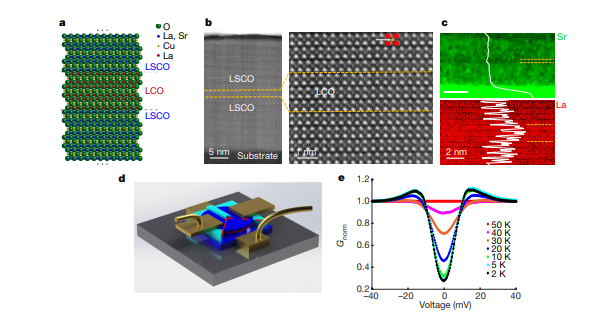Electron pairing in the pseudogap state revealed by shot noise in copper-oxide junctions
In the quest to understand high-temperature superconductivity in copper oxides, debate has been focused on the pseudogap-a partial energy gap that opens over portions of the Fermi surface in the 'normal' state above the bulk critical temperature1. The pseudogap has been attributed to precursor superconductivity, to the existence of preformed pairs and to competing orders such as charge-density waves1-4. A direct determination of the charge of carriers as a function of temperature and bias could help resolve among these alternatives. Here we report measurements of the shot noise of tunnelling current in high-quality La2-xSrxCuO4/La2CuO4/La2-xSrxCuO4 (LSCO/LCO/LSCO) heterostructures fabricated using atomic layer-by-layer molecular beam epitaxy at several doping levels. The data delineate three distinct regions in the bias voltage-temperature space. Well outside the superconducting gap region, the shot noise agrees quantitatively with independent tunnelling of individual charge carriers. Deep within the superconducting gap, shot noise is greatly enhanced, reminiscent of multiple Andreev reflections5-7. Above the critical temperature and extending to biases much larger than the superconducting gap, there is a broad region in which the noise substantially exceeds theoretical expectations for single-charge tunnelling, indicating pairing of charge carriers. These pairs are detectable deep into the pseudogap region of temperature and bias. The presence of these pairs constrains current models of the pseudogap and broken symmetry states, while phase fluctuations limit the domain of superconductivity.
